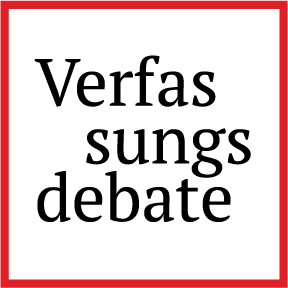Personhood Across Borders
The Mar Menor Before Swiss Authorities
On 10 July 2025, the Swiss State Secretariat for International Finance (SIF) recognized the Spanish saltwater lagoon Mar Menor as a legal subject – at least to the extent of granting it access to environmental information. This decision followed a request for information submitted by the lagoon’s legal representative. The case demonstrates that the legal personhood of ecosystems can operate across national borders and opens the door to the enforcement of Rights of Nature even in states that lack statutory recognition of such rights. Could ecosystems like the Mar Menor, in the future, bring damages actions against companies whose activities in another country cause ecological harm?
Mar Menor as a legal subject under Spanish law
By virtue of Law 19/2022 of 30 September 2022, the Mar Menor in Murcia was granted legal personhood and expressly recognized rights, including rights to preservation, protection, and restoration (Art. 2). This legislative development was driven largely by civil society activism and a popular initiative. In November 2024, the Spanish Constitutional Court upheld the constitutionality of the statute and dismissed a constitutional challenge brought inter alia by the far-right party Vox. The lagoon is thus a full-fledged legal person – at least within Spain. The statute defines the geographic scope of the protected ecosystem (Art. 1) and enumerates specific rights (Art. 2). Under Art. 6, any natural or legal person is entitled to defend the interests of the Mar Menor.
Spain thus became the first EU Member State (see here and here) to enact legislation recognizing the legal personhood of an ecosystem. The development aligns with the global “Rights of Nature” movement, which has gained considerable momentum in recent years. Comparable claims have also surfaced in Germany, where two judgments of the Regional Court of Erfurt (see here and here) derived the legal personhood of nature as a whole from the EU Charter of Fundamental Rights – an approach that, from the perspective of legitimacy theory, invites critical reflection.
The Swiss proceedings in detail
On 3 July 2025, the lagoon’s legal representative submitted a request for information to the SIF, seeking details on measures adopted pursuant to Art. 10 of the Swiss Climate Protection Act, which had entered into force on 1 January 2025. The request invoked Art. 6 of the Federal Act on Freedom of Information in the Administration (BGÖ), Art. 4 of the Aarhus Convention, and Art. 10 ECHR.
The SIF initially expressed doubts as to whether the Spanish statute – particularly the representation clause in Art. 6 of the Mar Menor Act – could have extraterritorial effect in Switzerland. For pragmatic reasons, it proposed to treat the request as if it had been submitted directly by the representative herself.
The representative, however, objected and demanded recognition of the Mar Menor as a legal person as well as confirmation of her authority to act on its behalf. She argued that under Art. 6(1) BGÖ “any person” is entitled to access official documents, and that the Mar Menor, as a foreign legal person, therefore enjoys a subjective right to access environmental information. In support of her claim, she invoked Arts. 154 and 155 of the Swiss Private International Law Act (IPRG) and case law of the Swiss Federal Supreme Court, according to which foreign legal persons – if validly constituted under their law of incorporation – possess legal personhood and capacity to act in Switzerland as well (see BGE 138 III 714 (721) and BGE 117 II 494 (497)).
On 10 July 2025, the SIF decided that the informal procedure concerning access to official documents would proceed with the Mar Menor itself as the applicant. In reaching its decision, the authority attached particular weight to the applicant’s submissions on Art. 6 BGÖ and the individual right of access to information enshrined therein. It also considered the broad purpose of the Act to inform the public. (cf. Art. 1, second sentence, BGÖ) and the arguments concerning the Mar Menor’s legal capacity as a foreign legal person.
Foreign legal persons in Swiss conflict of laws
The SIF’s decision thus raises a central conflict-of-laws question: can an ecosystem recognized as a legal person under Spanish law also be regarded as such in Switzerland? The Swiss Private International Law Act (IPRG) determines which law governs the existence and capacity of foreign legal persons. Under Art. 154(1) IPRG, companies are subject to the law of the state under which they are organized. Art. 155 IPRG specifies that the applicable law governs, inter alia, the nature of the legal entity, its formation and dissolution, its legal capacity and agency, and the powers of its representatives. Swiss private international law thus follows the incorporation theory: the law of the state of incorporation governs legal personhood and capacity.
In civil proceedings, this approach would be readily applicable. The peculiarity here lies in the public law context of the information request: whether the notion of “person” in Art. 6(1) BGÖ is to be interpreted by reference to private law conflict rules or autonomously under public law has, as far as can be seen, not yet been addressed in doctrine or case law. The purpose of the BGÖ suggests an autonomous and broad interpretation rather than a reference to the – potentially narrower – standards of foreign law. On the other hand, when it comes to legal persons, applying the law of incorporation facilitates recognition as a legal entity. For that reason, Art. 154(1) IPRG should at least be relied upon in this respect.
It should be noted, however, that Art. 154(1) IPRG refers to “companies”. According to Art. 150(1) IPRG, companies are defined either as “organized associations of persons” or as “organized units of assets”. For the Mar Menor, only the latter category is relevant. Typical examples of such asset-based entities are foundations, which are characterized by a separate pool of assets dedicated to specific (including non-profit) purposes and administered by their own organs. Although this may at first glance appear odd, it functionally mirrors precisely what the Mar Menor Act seeks to establish: the geographical area delimited in Art. 1 of the Mar Menor Act can be understood as a (natural) resource and thus as an independent pool of assets, whose protection is specified as purpose in Art. 2 and whose administrative organs are organized under Art. 3 with a mandate to enforce its protection. Even the actio popularis, as authorized by Art. 6, is familiar to debates in the context of foundations. The lagoon can therefore be regarded as a “company” within the meaning of Art. 150(1) IPRG, with the result that Swiss courts and authorities would, in principle, be obliged to respect the legal personhood conferred upon it under Spanish law.
Recognition could only be refused if the result under Spanish law conflicted with Swiss public policy (Art. 17 IPRG). In the present case, however, there is no indication of any violation of fundamental Swiss values. On the contrary, the case reinforces climate and environmental protection – regulatory objectives also firmly recognized in Switzerland.
Access to environmental information in Germany
Following its success in Switzerland, further information requests submitted on behalf of the Mar Menor are currently pending in other European states, including Germany. There, the Saxon State Office for Environment, Agriculture and Geology has, at least in abstract terms, acknowledged that ecological entities may possess legal personality. According to the State Office, any natural or legal person under private law – including foreign entities – is entitled to assert such claims. Pursuant to § 11 of the Administrative Procedure Act (VwVfG) in conjunction with § 1 of the Saxon Administrative Procedure and Service of Documents Act (SächsVwVfZG), associations are likewise capable of participating in administrative proceedings in so far as they can have rights. As the rights of the Mar Menor derive from the Spanish Law 19/2022, the State Office concluded, no further formal recognition of the applicant as a legal subject was required.
The legal basis for access to environmental information in Germany is § 3(1) of the Environmental Information Act (UIG), which provides:
“Any person shall, in accordance with this Act, have a right of free access to environmental information held by an obliged body […] without having to show a legal interest.”
The legislature thereby implemented the Aarhus Convention and the EU Environmental Information Directive. The right is broadly framed: it does not distinguish between German and foreign applicants and, like the Swiss BGÖ, refers only to the term “person”. Accordingly, an application could also be submitted by a foreign legal person.
If again the scope of the term “person” is treated as an incidental question to be solved by private international law, then international company law would have to be applied to determine the law governing the legal personhood of the Mar Menor. For legal persons without a commercial purpose, Germany adheres to the real seat theory, since the conflicting freedom of establishment does not apply pursuant to Art. 54(2) TFEU. As is evident from Art. 3 of the Mar Menor Act, the administrative organs of the foundation-like entity are located in Spain, so Spanish law would be controlling. Because Spanish law recognizes the lagoon as a legal person, it would in principle be entitled to submit a request under § 3(1) UIG. The competent authority would, however, still have to consider whether recognition is precluded by German public policy (Art. 6 Introductory Act to the Civil Code, EGBGB) and whether the representative’s actions fall within the scope of its authority conferred by Art. 6(1) of the Mar Menor Act.
By its wording, Art. 6(1) of the Mar Menor Act authorizes representation exclusively for the assertion of the rights and prohibitions established in the statute and its implementing provisions. The general right of access to information under § 3(1) UIG is not explicitly covered, since it rests on a distinct legal basis shaped by EU and international law. Spanish law provides a substantively similar entitlement to access environmental information in Art. 3 of Law 27/2006, which implements the Aarhus Convention. With a view to whether the information right falls within the ambit of Art. 6(1) of the Mar Menor Act, one could argue – by way of a teleological interpretation – that access to environmental information, whether under Spanish or German law, constitutes a necessary precondition for the enforcement of the lagoon’s statutory rights. Without access to relevant environmental information, the judicial representation of the ecosystem would remain ineffective; the very purpose of the statute – to ensure effective protection of the Mar Menor – thus militates in favor of such an interpretation.
Application to judicial proceedings?
The Swiss decision concerned an informal administrative procedure. Yet the conflict-of-laws reasoning underlying the recognition of the Mar Menor as a legal person could equally apply in judicial proceedings, particularly in civil litigation. A lawsuit filed by the lagoon before Swiss courts would therefore be conceivable, provided that standing is granted under the applicable substantive law. The concrete prospects of success would depend on the nature of the claim – for example, ecological damages.
In the case of a damages action brought by Mar Menor before a German civil court for environmental harm, the applicable law would be determined under the Rome II Regulation. Pursuant to Art. 4(1) Rome II, the governing law is generally that of the state in which the damage occurs (lex loci damni) – here Spanish law, if the (primary) ecological damage arises within the lagoon. Because this constitutes environmental harm, however, Art. 7 Rome II allows the claimant to opt instead for the law of the place of the harmful act (lex loci actus), which could be German law if the harmful activity occurred there (e.g., emissions in Germany). Questions of legal capacity are expressly excluded from the scope of the Rome II Regulation (Art. 1(2)(d)) and remain governed by national conflict rules. As in the administrative context, this would again point to Spain as the seat of the lagoon. A German court could thus recognize the legal capacity of Mar Menor as a legal person under Spanish law. Such recognition could, in turn, have repercussions on German substantive law by sharpening awareness of the potential legal personhood of domestic environmental entities.
Looking ahead
The proceeding discussed here raises questions that are likely to arise with increasing frequency, as illustrated by the ensuing case in Germany. International examples, such as the Ecuadorian Constitutional Court’s judgment on the legal personhood of a monkey, show that different jurisdictions recognize the legal subjectivity of ecosystems and animals – whether by statute, constitutional amendment, or judicial decision. Within Europe, such recognitions have thus far remained the exception, and the significance of the present case should not be overstated given its informal character. Yet the fact that a Spanish ecosystem seeks information on Swiss climate protection measures underscores the cross-border dynamics of the international “Rights of Nature” and animal rights movements, as well as some unresolved challenges of transplanting these concepts into European legal orders.




Most interesting! This had completely escaped me. Thank you for a well written post (and Rebecca Ricifari for the flag).